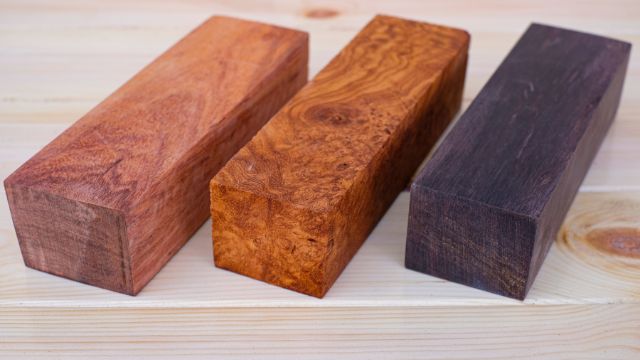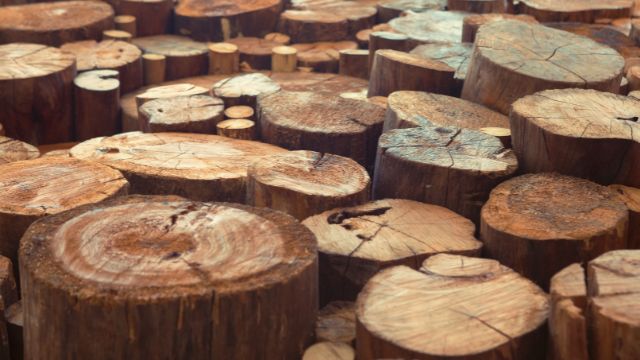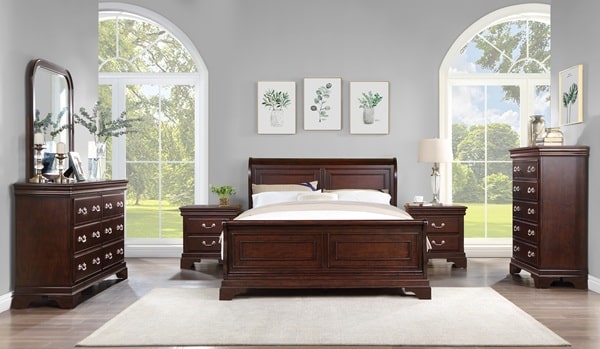Many people get attracted to the interlocked pattern of wooden furniture, which is mostly made out of Padauk wood. Whereas others find teak wood’s simple grainy pattern really aesthetically appealing. And when it comes to woodworking projects, both of these wood types are high in demand. But is it only the aesthetic appeal of the furniture piece that matters? Well, of course, there is more to it like the durability of the wood, price, and other important characteristics. And to shed light on these things, we are here with an in-depth comparison between Padauk Wood vs Teak Wood. We will be going over the possible pros and cons of both Padauk Wood and Teak Wood here to let you know which wood type is perfectly suited for your next woodworking project. Let’s get started then.
Padauk Wood
When you’re looking to add a dash of durability and a splash of vibrant color to your woodworking projects, you can’t go wrong with Padauk wood. This type of hardwood has built a strong reputation for its strength and sturdiness, not to mention its ability to spruce up any space with its palette of unique colors. Whether it’s high-end furniture, beautiful cabinets, dependable flooring, or versatile indoor and outdoor projects, Padauk wood brings a combination of reliability and aesthetic appeal that’s hard to beat. But hold your horses, before you dive headfirst into a Padauk-filled woodworking project, it’s a good idea to get acquainted with both the pros and cons of this striking wood.
Pros of Padauk Wood
- Its exceptional durability and strength have made it a favorite amongst many woodworkers. This translates into long-lasting pieces that can take on the rough and tumble of everyday life.
- Its natural termite resistance is another strong point in its favor, making it an excellent choice for furniture and construction that needs to stay strong for years to come.
- But Padauk isn’t all about strength and sturdiness. It’s also got a sense of style. Padauk wood has a variety of colors, from a soft and soothing pale pink to a deep and energetic orange. This colorful palette brings a unique aesthetic touch to any project, giving it a standout quality.
- The straight and open texture of Padauk wood gives it a visually appealing look that’s versatile enough for a variety of applications. It’s another feather in the cap of this all-around hardwood.
Cons of Padauk Wood
- The wood’s interlocked grain structure can make it a challenging material, particularly for beginners in woodworking. It demands a bit of patience and a lot of skill.
- As time marches on, Padauk wood tends to lose some of its youthful vibrancy. Exposure to sunlight and UV light can cause the wood to darken with age.
- Its high demand and relatively slow supply rate mean it fetches a higher price tag than many other types of wood. If you’re watching the pennies, this could be a deal-breaker.
- It releases a distinct, often pungent odor during woodworking that might not be everyone’s cup of tea. On top of this, some woodworkers have reported respiratory irritations, not to mention potential allergy problems for the eyes and skin.
Teak Wood
Teak is a hardwood that is renowned and coveted for its beautiful grain texture and legendary toughness. You’ll often see this beauty gracing both indoor settings and outdoor spaces, flexing its versatility and adding an elegant charm to every piece it shapes. From backyard patio furniture to cozy living room settings, this majestic timber brings a lot to the table, quite literally!
Pros of Teak Wood
- First off, the pure aesthetics of teak furniture are downright captivating. The grain pattern, tight and straight, is a feast for the eyes, while its natural golden-brown hue adds a warm, earthy tone to any room. As it ages, it doesn’t lose its appeal, rather, it matures beautifully.
- It can be shaped into any piece of furniture your heart desires. Need a majestic dining table with matching chairs? Check. How about a solid bed frame or a rustic bench seat? Teak’s perfect for that too.
- Here’s where teak truly shines, its resistance to rot, decay, and even those pesky termites. Thanks to the high concentration of natural oils within the wood, it’s practically impervious to these typical wood adversaries.
- Teak is incredibly easy to take care of. More often than not, a simple wipe-down with a lint-free cloth is all it takes to banish any lurking dust or dirt.
Cons of Teak Wood
- The flip side of teak’s many benefits is its cost. This luxurious hardwood is one of the priciest on the market, its value amplified by its beauty, durability, and the decreasing availability of natural resources.
- Telling genuine teak wood apart from its lesser counterparts requires a discerning eye, and only an expert can reliably identify it.
Final Take
Now you have a clear understanding of which type of wood is perfect for which conditions and woodworking project. Right? However, the final decision is only yours to make based on what you want your furniture to look like, what your requirements are in terms of durability, and how much you are willing to spend.



